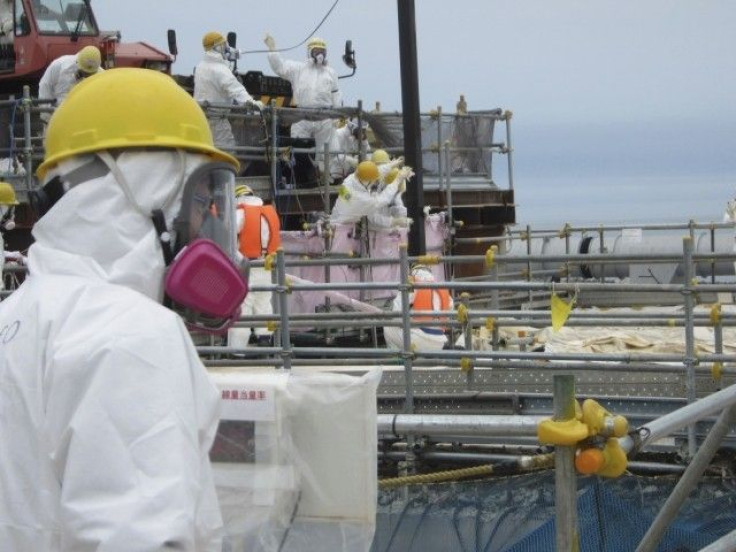Tepco Gets $12.8B Bailout From Tokyo, Continues To Burden Japanese Public

The Japanese are facing a bill of $12.8 billion (or 1 trillion yen) to keep Tokyo Electric Power Co. (Tokyo: 9501) operating. No doubt this will leave a bitter taste in their mouths, since many feel the utility has betrayed the trust bestowed upon it by the public before the March 2011 nuclear disaster in Fukushima.
The government offered to pay the aforementioned funds on Tuesday in order to bail out the failing utility in eastern Japan, effectively nationalizing Tepco and forcing it into what company President Naomi Hirose calls "temporary state control."
Tokyo's bureaucrats now have majority voting rights in the company, at slightly over 50 percent, and it is hoped by observers that they will use the new authority to restructure and reform the company over the next several years into a more transparent --and hopefully profitable -- operation again.
Yukio Edano, minister of economy, trade and industry, cautioned at a news conference, however, that such a process would take a "considerably long period of time."
That means the financial burdens crushing Tepco will likely be loaded onto the public, perhaps for the long term. Tepco will now carry out an 8.46 percent increase to electricity rates for household owners in parts of eastern Japan and Tokyo -- this rate is actually lower than its original request for a 10.28 percent increase.
The rate hikes are expected to take effect Sept. 1.
A public statement on the company website said, "We deeply apologize to our customers for the heavy burden." A quarter percent reduction in rates will be awarded to corporations, who received a near 15 percent increase in April.
The new rate changes are expected to deliver Tepco more than 500 billion yen (some $6 billion) in new annual revenues.
Tepco is seeking another 1 trillion yen from major creditors, with 370 billion yen to be confirmed on Wednesday.
Whether these measures would be enough to save the company remains uncertain.
The company lost 781 billion yen (nearly $10 billion) in the fiscal year after the March 2011 nuclear disaster. Costs for the company increased, as they did for other utilities in Japan, after it had to shut down nuclear facilities and begin importing fossil fuel for thermal power stations, pushing up the reliance on more expensive overseas energy sources to power the energy grid.
Those costs for Tepco do not include the yet unknown, but likely gigantic, sum still needed to compensate Fukushima residents for the nuclear accident and to clean up the disaster area. The company is also accruing continuing costs for stabilization of the devastated Fukushima reactors.
Although the government is expecting to be paid back -- the public money going to Tepco currently comes in loans through the Nuclear Damage Liability Facilitation Fund -- in the meantime, taxpayer money is expected to be used (at least in part) to compensate for victims and damages to the public.
In response to the new developments, the president and chairman of the company said Tepco would be "resolute in our determination to achieve compensation payouts with courtesy and compassion, stabilize Fukushima Daiichi nuclear power station, and ensure reactor decommissioning along with a stable power supply."
What is the government's recourse if current measures to save or reform Tepco fail?
It reserves the option to increase voting rights over the company to 75 percent, giving it the authority to merge the company with another major utility in the country or to liquidate it entirely.
That leaves other unanswered questions. What company would want to take on any responsibilities for the colossal failures that Tepco now presides over? Since Japan's power utilities were organized into regional monopolies, who would even replace Tepco in its geographic zone?
Tepco says it is planning to begin restarts of its remaining seven major reactors by April 2013. That could slowly alleviate the burdens of high price fuel imports from overseas.
However, it may also lead the country and company down yet uncertain political pathways. Opposition to a nuclear restart remains adamant and has galvanized large segments of the population.
Anti-nuclear activists in Japan -- the only nation to be attacked with atomic weapons -- are expected to continue their campaign against restarting reactors, even for temporary use in the short and medium term. In mid-July, protests unprecedented in scale, drew some 75,000 people (according to police estimates) to central Tokyo to demonstrate against the nuclear restart; activists say they numbered nearly twice as many.
The process of preparing the country's reactors for restarts have not been without trouble. The Chubu Electric Power Co. (Tokyo: 9502) (also known as Chuden), in charge of power for the middle of Japan's main Honshu Island and Nagoya, its third largest city, is now delaying plans to restart its Hamaoka nuclear plant (located on the coast between Nagoya and the Izu Peninsula).
Chuden originally expected to pay nearly $2 billion to build an 18-meter high (nearly 60 feet) seawall to protect the plant from tsunamis.
It now says it needs to provide more backup generators for the plant (the failure of backup generators at Fukushima is often cited as a major setback for initial attempts to contain the nuclear disaster) and may need to extend the sea wall, leading, of course, to increasing costs.
© Copyright IBTimes 2024. All rights reserved.











